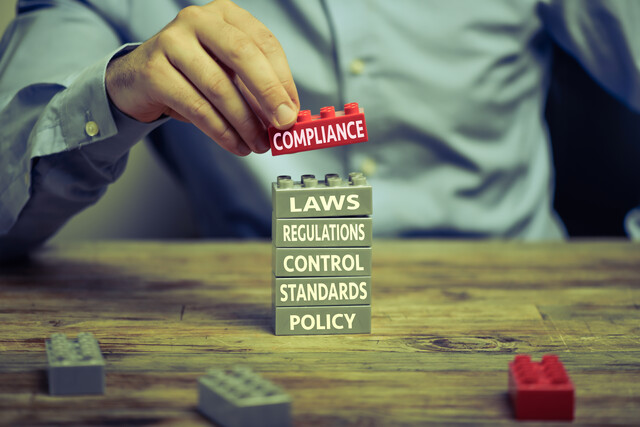This section is on identifying improvements and strengths. We will also cover how the consultant can help as well as review how to develop an organizational philosophy going forward and how clients can be competitive. These are all important topics for the consultant so let's get started.
IDENTIFYING IMPROVEMENTS
Here are guidelines a consultant can use to help a client with organizational improvements.
Plan and assess
When you plan and assess here are the guidelines.
1. Assess a problem or area of improvement
2. Determine who else in the organization shares your view
3. Set up a meeting to discuss ways to work together
4. Set up an exploratory task force
5. Develop action committees
6. Discover priority needs
7. Conduct needs surveys and focus group meetings
8. Research past surveys
9. Look at what competitors are doing
10. Collect information about the problem
Set objectives
When completing this activity here are some guidelines.
1. Set objectives
2. Plan how to accomplish objectives
3. Define clearly what you want to accomplish
4. Set dates
5. Write out what changes must happen
6. Develop an action plan
Identify strengths and weaknesses
Here are some guidelines for completing this work.
1. Identify the strengths and weaknesses of your organization
2. Note that strengths can include experience and knowledge of your staff
3. Note that weaknesses can be a poor marketing campaign
4. Identify what outside threats exist
5. Note that outside threats can include competition
Look at your governing structure
Here are guidelines on this work.
1. If you have no structure, recognize you need one
2. Give clear guidelines on how to proceed with problem solving
3. Create a structure that empowers individuals to solve problems
4. Create a group to solve the problem or create an initiative
Identify roles and committees
During this work here is a list of the kinds of roles and committees to consider to set your organization up for success.
1. Steering committees
2. Coordinating councils
3. Project coordinators
4. Task forces
5. Action committees
6. Support committees
7. Board of directors
Describe rules
Here are the kinds of rules to consider.
1. By laws
2. Conflict of interest documentation
3. Financial policies
4. Media policies
5. Personnel policies
6. Volunteer policies
7. Quality policies
8. Risk assessment policies
Develop effective personnel policies
Here are guidelines to consider.
1. Document who is responsible for what
2. Write position descriptions
3. Create organizational charts
4. Describe how groups share information
5. Describe how to change policies and procedures
6. Describe dispute resolution
7. Document who makes final decisions
Manage staff
Here are guidelines for this work.
1. Define a volunteer policy
2. Describe who will oversee volunteer activities if relevant
3. Describe rules on the use of consultants
4. Describe rules for training and staff development
5. Determine what work can be done by staff, consultants, and volunteers
6. Determine interview procedures
7. Define how the organization will provide feedback to management
8. Develop a management plan
9. Create an evaluation system
10. Provide career development opportunities
11. Recognize accomplishments of staff and volunteers
Plan for financial management
Here are guidelines on this work.
1. Describe how budgetary decisions are made
2. Document the role of the board in developing a budget
3. Document the role of financial officers and other in developing a budget
4. Define policies and procedures about governing budgets
5. Define policies and procedures on cash flow and expenses
6. Describe financial record keeping practices
7. Describe sources of income for your organization
8. Describe who will resolve financial disputes
9. Describe auditing functions for budgets
Keep communication effective within and outside the organization
Here are guidelines on doing this work.
1. Define what you want to accomplish
2. Specify goals and objectives
3. Explain how you want more people to know about your group
4. Develop a communication plan
5. Conduct a social marketing campaign
6. Identify your audiences for communication
7. Develop creative promotions
8. Identify the best channels for communication
9. List dates to carry out your plans
10. Develop an action plan
11. Determine the costs of your plan
IDENTIFYING STRENGTHS AND WEAKNESSES
Here are some guidelines about how to help your clients identify their strengths and weaknesses.
Helping a client know where they are strong and where they need assistance can assist them to achieve their greatest personal and professional potential.
Self knowledge is a tool that is easy to disregard because some people may feel uncomfortable examining their weaknesses or they simply feel unable to. Here are some guidelines on helping someone look at their good qualities as well as how to identify areas of improvement in the context of a job interview.
Understand your abilities and accomplishments
Here are some ideas about how to understand your abilities and accomplishments.
1. Write down your accomplishments and activities and consider what is in your resume when you make up this list.
2. Determine which of your accomplishments and activities gave you satisfaction.
3. Give each accomplishment a rating from 1 to 5 on how much you enjoyed it.
4. Devote a week of journaling to complete this list.
5. Write down your values. For example, if you help family members or do volunteer work this reflects on your values. These are beliefs that help you decide how you interact with others and the world.
6. Write down the names of people you respect, what you admire about them, what traits they have, and how you compare to these people.
7. Write down a time in your life when you felt satisfied, what happened then, and why you felt that way.
8. Write down what three things (not people or pets) you would save if your house was on fire.
Look for patterns
Once you have completed listing your accomplishments and activities, look for patterns. Here are some guidelines:
1. In the list of people you admire analyze the qualities of those people
2. If you admire an artist this means you value creativity.
3. If you do volunteer work this reflects a value such a helping society and community.
4. Determine if your life aligns with your values. If you value ambition and feel stuck in a job you could see this as a weakness.
Consider your situation and environment
Here are some guidelines on how this can help.
1. Consider your current work situation and how it fits your values and strengths
2. For example if you value education is this recognized in your environment
3. Consider how changing your environment could fit your strengths
Ask for input
Here are some guidelines on how to do this and how it can help.
1. Ask friends and people from work, school, and former jobs about your strengths and weaknesses.
2. Ask people in various areas of your life.
3. Ask for feedback. This can be feedback on work you have done. The feedback can be about your skills and your personality.
4. Use email to ask so the person can have time to respond.
5. Look for patterns. If you do volunteer work and get good feedback, look at what value, strength, and weakness this represents.
6. Use a table with a trait at the top of a column and write down what responses you got about that trait.
Once a person looks at their strengths and weaknesses, this can help with decisions about future activities. A consultant can help with this on a professional level.
USE SWOT ANALYSIS TO FIND STRENGTHS AND WEAKNESSES
A consultant can use SWOT analysis to help an organization look at strengths and weaknesses. SWOT is an acronym for strengths, weaknesses, opportunities, and threats.
SWOT analysis is a structured method for planning. Use it to evaluate these four elements for a project, organization, product, place, industry, or person. If you apply it to a project you can identify factors � both external and internal � that can help or hinder achievement of the objective.
Let's begin by looking at some definitions.
? Strengths � these are characteristics of a project or business that can give a group an organization
? Weaknesses � there are characteristics that place a project or business at a disadvantage compared to others
? Opportunities � these are elements that a project or business can use as an advantage
? Threats � these are elements that could hurt a project or business
Why is a SWOT analysis of value? The answer comes as we see how groups can use this analysis to make decisions. The decisions can be about plans to achieve an objective. After you compete a SWOT analysis you can better see if you can attain an objective. If you decide you cannot attain an objective you can set a different objective and complete a SWOT analysis on that objective.
The analysis you get from the SWOT technique gives you information about internal and external factors.
Internal factors include the strengths and weaknesses internal to an organization. External factors include opportunities and threats present in the environment external to an organization. External factors can include:
1. Legislation
2. Technology
3. Macroeconomic factors
SWOT analysis can work for various organizations including for profit organizations, non-profits, and government units. You can also as a consultant recommend to your clients that you use SWOT analysis for projects such as:
1. Pre crisis planning
2. Crisis management
3. Viability studies
4. Surveys
DEVELOPING AN ORGANIZATIONAL PHILOSOPHY
Here are guidelines on how a consultant can help an organization with development of a philosophy.
1. Philosophy should reflect beliefs and values
2. Philosophy should reflect how work will proceed in the future
3. Philosophy provides details on culture, policy, and procedures
Here are examples of what can be in a philosophy.
1. Our organization aspires to be a global supplier of equipment
2. We hire those who agree with our philosophy
3. We believe our people are our greatest assets
4. Our leadership works on the local, national, and global levels
5. We develop management that will lead us through change
6. Our policies and procedure reflect our values
7. Our staff feels engaged, productive, and valued
With regard to policy here are some guidelines.
1. Policies should reflect a philosophy
2. The organization should test philosophies and procedures so they align with the culture and philosophy
HELPING CLIENTS BE COMPETITIVE
Here are some ideas a consultant can use to help a client stay competitive.
1. Use a strong marketing communications campaign.
2. Maintain the visibility of your organization, remembering that a customer can forget about an organization and its products and services. It can be cost effective to maintain awareness.
3. Explain clearly and with consistency what you can offer your clients and how you stack up to the competition.
4. Keep up with industry trends and continuous improvement and explain to your clients how you do this.
5. Rethink strategies and tactics to keep up with industry trends and competitors.
6. Use newer technologies such as those in social media to maintain your marketing presence and reputation.
Here are some more ideas about what outside of the marketing realm a consultant can do to stay competitive.
1. Analyze competitors. Know what competitors offer and how you are unique.
2. Understand your customer requirements. Find out what matters to your customer. This can include price, keeping up with emerging technologies, and good service.
3. Differentiate. Understand why a customer would work with you instead of your competition.
4. Keep your brand current. Make sure what you have to offer is keeping up with what customers want today.
5. Keep current customers happy. It is typically more cost effective to keep current customers than find new ones.
6. Look for new customers. As you look at the markets you serve now you should look at how to increase these markets.
7. Offer related products. If you diversify and expand your products this can mean additional growth.
8. Keep employees happy. Employees can be the greatest asset in your organization. Consider flexible working conditions, recognition, and training to keep employees happy.
9. Plan for the future. Keep up with developments in your field and plan on how your organization will address new technologies in the future.
SUMMARY
In this section we looked at how a management consultant can identify improvements, strengths, weaknesses, and a philosophy for an organization and advise a client on how to do this. In evaluating strengths and weaknesses, we looked at the SWOT analysis technique as a possible tool to help. We also looked briefly at ideas a consultant can provide about helping a client stay competitive.






























